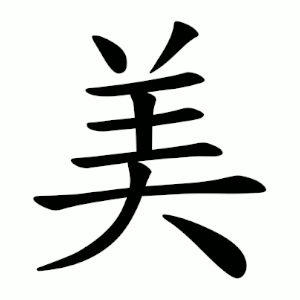美
- beauty;
- beautiful;
Etymology
In oracle bone script (갑골문자), it was drawn as the figure of a person wearing a head ornament. This imagery conveyed the idea that a person adorned with a headdress looked splendid and pleasing, hence the meaning “beautiful, lovely, splendid.”
In the Shuowen Jiezi (説文解字 shuōwén jiězì), it is analyzed as a compound of 羊 (yang, “sheep”) and 大 (dae, “big, great”): “Sheep are among the domestic animals that primarily provide nourishment.” From this, the character was interpreted as symbolizing something fine, pleasing, or beautiful.
Usage in Korean
In compounds, can carry both literal (beauty) and figurative (virtue, excellence) meanings.
미국 (美國) – the United States of America
미인 (美人) – beautiful person
미술 (美術) – fine arts
미덕 (美德) – virtue, moral excellence
미화 (美化) – beautification, glorification
Words that derived from 美
Additional notes
For America/United States, the character is used in 美國 (미국). Historically, the country was referred to as 미리견 (美利堅), derived from the transliteration of American. Originally “Ameilijian” (reflecting older Chinese pronunciation similar to American), but the initial A weakened and disappeared due to its unstressed position, leaving Meilijian (美利堅).
In Korean, 美 is normally read as a long vowel (미ː), but when used in 미국 (美國), it is shortened to a short vowel.
- 廿土大 (TGK)
- ⿱ 𦍌 大
